Homosexuality is one in 10. It’s one in 10 on the football team. It’s one in 10 on the baseball team. It’s one in 10 on the softball team. It’s one in 10 on the basketball team. Those are facts.
~Homosexual activist Pat Griffin1
One of the most persuasive arguments that homosexual activists use to support their agenda is the assertion that 10% of all people are “gay.” If homosexuals can convince people that they make up a much larger portion of the population than they actually represent, they are much more likely to garner support for their agenda. Even many ostensibly objective media will parrot this number. The homosexual movement has even named some of their organizations “One-n-Ten,” “The Ten Percent Foundation,” “Project Ten,” and the “One in Ten Club.”
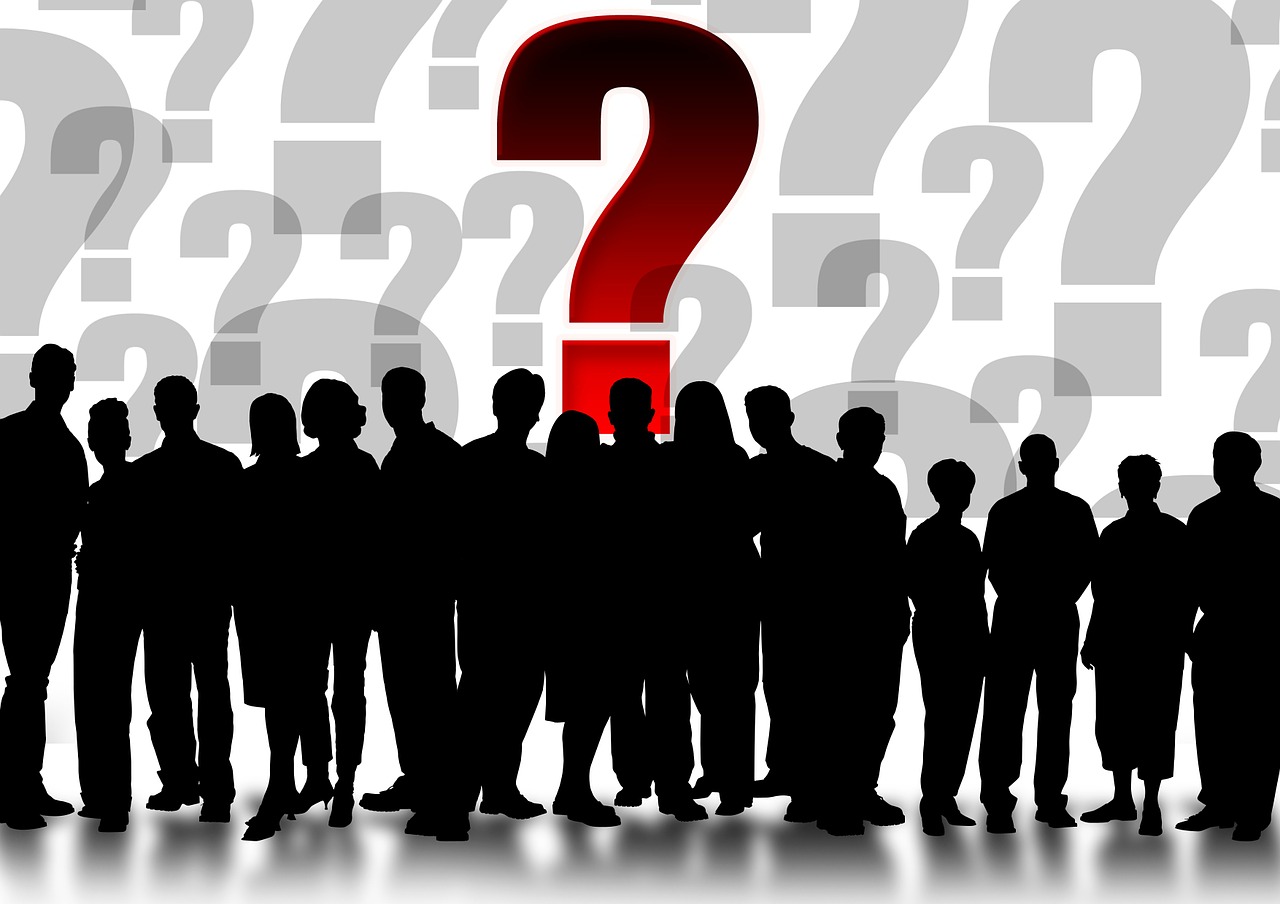
The relentless media-boosted hoopla by the special rights movement has accomplished its intended purpose. Two recent Gallup polls found that Americans believe that an incredible 25% of people are homosexuals. Only 4% believed that 5% or less are homosexuals. Not surprisingly, the least educated Americans ― those who tend to take their lead from the media and believe whatever it tells them ― made the highest estimates.2
National Gay and Lesbian Task Force founder Bruce Voeller said:
After years of our educating those who inform the public and make its laws, the concept that 10 percent of the population is gay has become a generally accepted “fact.” While some reminding always seems necessary, the 10 percent figure is regularly utilized by scholars, by the press, and in government statistics. As with so many pieces of knowledge and myth, repeated telling made it so.3
The Source of the “10%” Claim
The original source of the “ten percent” statistic is Alfred Kinsey, perhaps the world’s best-known sex researcher. His most famous claim held that ten percent of the male population is “more or less exclusively homosexual for at least three years between the ages of 16 and 55.” Kinsey also claimed that 4% of all males are exclusively homosexual throughout their entire lives and alleged that an incredible 37% of men have had homosexual experiences during their lives.4 These results are not only the basis of the homosexual-rights “ten percent” myth, but also serve as a cornerstone of the comprehensive sex education classes taught in the Western world today.5
Bearing its founder’s name, the Kinsey Institute for Research on Sex, Gender, and Reproduction produces volumes of information that form the basis for much of the world’s sex education industry. However, much of the information and research generated by the Kinsey Institute is of dubious quality at best, as it has at times refused to reveal its sources and study methods.
Some researchers have reported that Kinsey was so fanatical about secrecy that he told his staff photographer William Dellenback that he would destroy all his files and risk imprisonment rather than let authorities see them.6
Conclusions First, “Research” Second
Kinsey’s research represents a classic example of looking for data to support a preordained set of desired conclusions. Gershon Legman, the original compiler for Kinsey’s pornography collection, revealed:
Kinsey’s not-very-secret intention was to “respectabilize” homosexuality and certain sexual perversions…. He did not hesitate to extrapolate his utterly inadequate and inconclusive samplings to the whole population of the United States, not to say the world…. This is pure propaganda and is ridiculously far from the mathematical or statistical science pretended.7
After his desired conclusions were drawn, all Kinsey had to do was ensure that the study process supported them, regardless of what data was gathered and analyzed. The best way to do this, of course, was to hire biased researchers. Kinsey only accepted applicants to do his research if they agreed with him that homosexuality was both normal and healthy.
Deliberately Biased Sources and Data
Next, to achieve the desired results, Kinsey focused only on groups that he knew had a very high percentage of homosexuals relative to the general population.
Kinsey’s Male Report was based upon the detailed analysis of the backgrounds and sexual practices of more than 5,000 men. At least one-fourth of Kinsey’s sample population were prison inmates and convicted sex offenders, which represent about one percent of the general population.8 According to Male Report coauthor Wardell Pomeroy, “We went to the [prison] records and got lists of the inmates who were in for various kinds of sex offenses.”9 Forty-four percent of all of the prisoners in the Kinsey male sample had had homosexual experience in prison, according to John Gagnon, a Kinsey researcher.10
Kinsey himself concluded that members of the prison population were more than four times more likely to be homosexuals than the general population.11 Since studies show that the actual percentage of homosexuals in the general population is from 1 – 2%, this factor alone was enough to guarantee that Kinsey would get the “ten percent” figure he desired.
According to page 216 of the Male Report, Kinsey’s second sample population consisted of “several hundred male prostitutes [who] contributed their histories.” Most male prostitutes are by definition homosexuals. So if 300 male prostitutes were interviewed for the Kinsey study, this factor alone would add about a (300/5,000) = 6% rate of homosexuality to the final conclusion.
Most of the remainder of Kinsey’s sample population consisted of volunteers, many of whom were clients from his private practice actively seeking advice on their sexual dysfunctions.12 As any researcher knows, the “volunteer bias” principle holds that volunteers for any type of study in any field will invariably skew the study results because they are always unrepresentative of the general population. A random sampling is invariably more accurate.
Even the use of three biased populations was not enough for Kinsey. He wanted to make absolutely certain that his study results were “satisfactory,” so he deliberately asked his volunteers biased questions. The Male Report admits, “We always assume that everyone has engaged in every type of [homosexual] activity. Consequently, we always begin by asking when they first engaged in such activity.”13
Despite the shoddiness of the research that backed up Kinsey’s studies, it has had a profound impact upon our society, because sex revolutionaries seized upon his tattered results in the same way population controllers pounced on Paul Ehrlich’s ridiculous book The Population Bomb.
The Truth: Prevalence of Homosexuality in the U.S.
In 1990, researchers Dr. Judith Reisman and Edward W. Eichel wrote Kinsey, Sex, and Fraud, in which they characterize Kinsey’s most famous works, Sexual Behavior in the Human Male and Sexual Behavior in the Human Female as “the most egregious example of scientific deception in this [twentieth] century.”14
Reisman and Eichel concluded that the actual percentage of male homosexuals in the United States is 1 – 2%, a figure strongly confirmed by a dozen large studies which also show that only 3.1% of men and 3.3% of women have ever had a homosexual experience in their entire lives — even if it was only one such experience.15
The percentage of lifelong or exclusive homosexuality would of course be much lower. A study completed by Alfred Spira of the Bicetre Hospital of Paris in June 1992 showed that only 1.1% of men and 0.3% of women had had a homosexual experience in the last twelve months.16 A 2003 survey by the Centers for Disease Control (CDC) found that only 2.3% of men and 1.3% of women referred to themselves as homosexuals.17 And a large 2003 Statistics Canada survey of 135,000 people found that only 1.3% of men and 0.7% of women identified themselves as homosexual.18 In 2014, the United States Census Bureau reported that the number of Americans who identify as homosexual in the American population is about 1.7% for men (one out of 60) and 1.1% for women (one out of 90).19
Finally, the most recent major government study of the percentage of people who identify as LGBT was carried out by the National Health Interview Survey. This 2018 survey found that 1.9% of men identified as homosexual, 1.4% of women as lesbian, and 0.8% of men and 1.8% of women as bisexual.
In all, 97.3% of men and 96.8% of women identified as straight.20 This means that, over time, the number of adults who identify as lesbian, homosexual or bisexual has held approximately constant over the past quarter-century.
More recently, studies have focused on identifying the percentage of adults who identify as transgender. The most recent large study focusing on this topic found that about 0.6% of all U.S. adults identify as transgender.21
Researchers are focusing much more attention to the sexual practices of teenagers as homophile groups like GLAAD, PFLAG and GLSEN have free access to peddle their propaganda in our schools. These three groups are part of the vanguard of dozens of national and local LGBT groups that have worked hard to raise the percentage of 15- to 17-year-olds who identify as “non-heterosexual” rise from 8.3% to 11.7% in just one four-year period ― from 2015 to 2019.22
Final Thoughts
Even some leaders of the special rights movement became weary of the charade a long time ago. Gareth Kirkby, Managing Editor of the Vancouver-based homosexual newspaper Xtra West, asked in 1998:
Why is it that some of us continue to bend and twist and otherwise play loose with often outdated so-called facts? Why, for example, do we continue to insist that 10 per cent of the overall population is gay or lesbian?… Yes, claiming we’re 10 per cent of the population makes us sound Impressive, a big vote for the wooing and an interest group that can’t be offended without serious consequences.23
There is a pressing need to jettison the lies that prop up the special rights movement, and the “ten percent” myth should be the first one that gets thrown into the dustbin.
+ Endnotes
[1] Homosexual activist Pat Griffin, quoted in Coaching Women’s Basketball, September/October 1996. “Coaches Magazine Spreads 10% Homosexual Myth as Fact.” American Family Association Journal, January 1997, page 9.
[2] Lymari Morales. “U.S. Adults Estimate That 25% of Americans Are Gay or Lesbian: Those with Lower Incomes, the Less Educated, Women, and Young People Give the Highest Estimates.” Gallup, May 27, 2011.
[3] Bruce Voeller. “Some Uses and Abuses of the Kinsey Scale.” In Homosexuality, Heterosexuality: Concepts of Sexual Orientation. The Kinsey Institute Series, June Machover Reinisch (general editor), Oxford University Press, 1990, pages 35 and 36.
[4] Alfred C. Kinsey, Wardell B. Pomeroy and Clyde E. Martin. Sexual Behavior in the Human Male [Philadelphia: W.B. Saunders Company], 1948. A summary of Kinsey’s findings on homosexuality may be found on pages 650 and 651.
[5] Kinsey’s conclusions on sexuality were contained in the famous studies he co-authored with Wardell B. Pomeroy, C.E. Martin, and Paul H. Gebhard. These were entitled Sexual Behavior in the Human Male and Sexual Behavior in the Human Female, published by the W.B. Saunders Company of Philadelphia in 1948 and 1953 respectively. Many details on these studies are posted on the Kinsey Institute website at http://www.kinseyinstitute.org/research/ak-data.html#analsex.
[6] E. Michael Jones. “The Case against Kinsey.” Fidelity Magazine, April 1989, pages 22 to 35.
[7] Gershon Legman. The Horn Book: Studies in Erotic Folklore and Bibliography [New Hyde Park, New York: University Books], 1964.
[8] Judith A. Reisman and Edward W. Eichel. Kinsey, Sex and Fraud: The Indoctrination of a People [Lafayette, Louisiana: Huntington House Publishers], 1990, pages 20 to 23 and 40; E. Michael Jones. “The Case against Kinsey.” Fidelity Magazine, April 1989, pages 22 to 35.
[9] Wardell Pomeroy. Dr. Kinsey and the Institute for Sex Research [New York City: Harper & Row], 1972.
[10] Judith A. Reisman and Edward W. Eichel. Kinsey, Sex and Fraud: The Indoctrination of a People [Lafayette, Louisiana: Huntington House Publishers], 1990, pages 20 to 23 and 40.
[11] P.H. Gebhard, J.H. Gagnon, W.B. Pomeroy, and C.V. Christenson. Sex Offenders: An Analysis of Types [New York City: Harper & Row], 1965.
[12] Judith A. Reisman and Edward W. Eichel. Kinsey, Sex and Fraud: The Indoctrination of a People [Lafayette, Louisiana: Huntington House Publishers], 1990, pages 20 to 23 and 40.
[13] Page 53 of The Male Report [emphasis in the original].
[14] Judith A. Reisman and Edward W. Eichel. Kinsey, Sex and Fraud: The Indoctrination of a People [Lafayette, Louisiana: Huntington House Publishers], 1990, pages 20 to 23 and 40.
[15] These studies were conducted in six different nations during the time period 1987 to 2002 and surveyed a total of 162,217 men and 49,153 women. The studies are as follows:
- “Sex in Australia: The Australian Study of Health and Relationships.” Australian and New Zealand Journal of Public Health, Volume 27, Number 2.
- K.W. Schmidt, et.al. “Occurrence of Sexual Behavior Related to the Risk of HIV-Infection.” Danish Medical Bulletin 1989:36, pages 84 to 88.
- M. Melbye and R.J. Biggar. American Journal of Epidemiology 1992:135 pages 593 to 602.
- “Sexual Behavior: French Venture Where U.S. Fears to Tread.” Science Magazine, July 3, 1992, page 25.
- G.M. Breakwell and C. Fife-Shaw. “Sexual Activities and Preferences in a United Kingdom Sample of 16 to 20-Year Olds.” Archives of Sexual Behavior, 1992:21, pages 271 to 293.
- J.M. Sundet, et al. “Prevalence of Risk-Prone Sexual Behavior in the General Population of Norway.” Described in Georg Liss, Global Impact of AIDS, 1988, pages 53 to 60.
- G. Ramafedi, et.al. “Demography of Sexual Orientation in Adolescents.” Pediatrics, 1992:89, pages 714 to 721.
- S. Roberts and C. Turner. “Male-Male Sexual Contact in the USA: Findings from Five Sample Surveys, 1970-1990.” Journal of Sexual Research 1991:28, 491-519.
- Deborah Dawson. “AIDS Knowledge and Attitudes for January-March 1990, Provisional Data from the National Health Interview Survey;” Joseph E. Fitti and Marcie Cynamon, op. cit. for April-June 1990; Pamela F. Adams and Ann M. Hardy, op. cit. for July-September 1990. All in Advance Data, numbers 193, 195, and 198, National Center for Health Statistics, Centers for Disease Control, Public Health Service, United States Department of Health and Human Services, page 11 in all three documents.
- Murray Edelman. “The Gay Issues.” The New York Times, November 5, 1992, pages B8 and B9.
- Alan Guttmacher Institute. Family Planning Perspectives, April 15, 1993.
[16] Peter Aldhous. “Sexual Behavior: French Venture Where U.S. Fears to Tread.” Science Magazine, July 3, 1992, page 25.
[17] William D. Mosher, Ph.D., Anjani Chandra, Ph.D., and Jo Jones, Ph.D., Division of Vital Statistics, Centers for Disease Control. “Sexual Behavior and Selected Health Measures: Men and Women 15-44 Years of Age, United States, 2002.” Advance Data from Vital and Health Statistics, Number 362 [September 15, 2005], pages 1 and 3. This survey was based on in-person interviews conducted between March 2002 and March 2003 in the homes of 12,571 people (4,928 men and 7,643 women) 15 to 44 years of age.
[18] “Canadian Community Health Survey.” The Daily, June 15, 2004. Statistics Canada Web site, February 5, 2007. See the section entitled “First Information on Sexual Orientation.”
[19] ProQuest LLC. Statistical Abstract of the United States, 2015 [3rd Edition, Bethesda, Maryland, 2014]. Table 107, “Sexual Identity among Men and Women: 2006 to 2008.”
[20] National Health Interview Survey, Sexual Orientation Information Statistics. Tables entitled “Sexual Orientation and Health among U.S. Adults: National Health Interview Survey,” 2014-2018.
[21] Andrew R. Flores, Jody L. Herman, Gary J. Gates, and Taylor N.T. Brown. “How Many Adults Identify as Transgender in the United States?” The Williams Institute, June 2016.
[22] Cara Murez. “Big Rise in U.S. Teens Identifying as Gay, Bisexual.” US News and World Report, June 15, 2021.
[23] Gareth Kirkby, Managing Editor of the Vancouver-based homosexual newspaper, Xtra West, acknowledged this in an editorial entitled, “No Need to Lie,” published in the August 20, 1998 issue.
Related Content
Dr. Brian Clowes has been HLI’s director of research since 1995 and is one of the most accomplished and respected intellectuals in the international pro-life movement. Best known as author of the most exhaustive pro-life informational resource volume The Facts of Life, and for his Pro-Life Basic Training Course, Brian is the author of nine books and over 500 scholarly and popular articles, and has traveled to 70 countries on six continents as a pro-life speaker, educator and trainer.




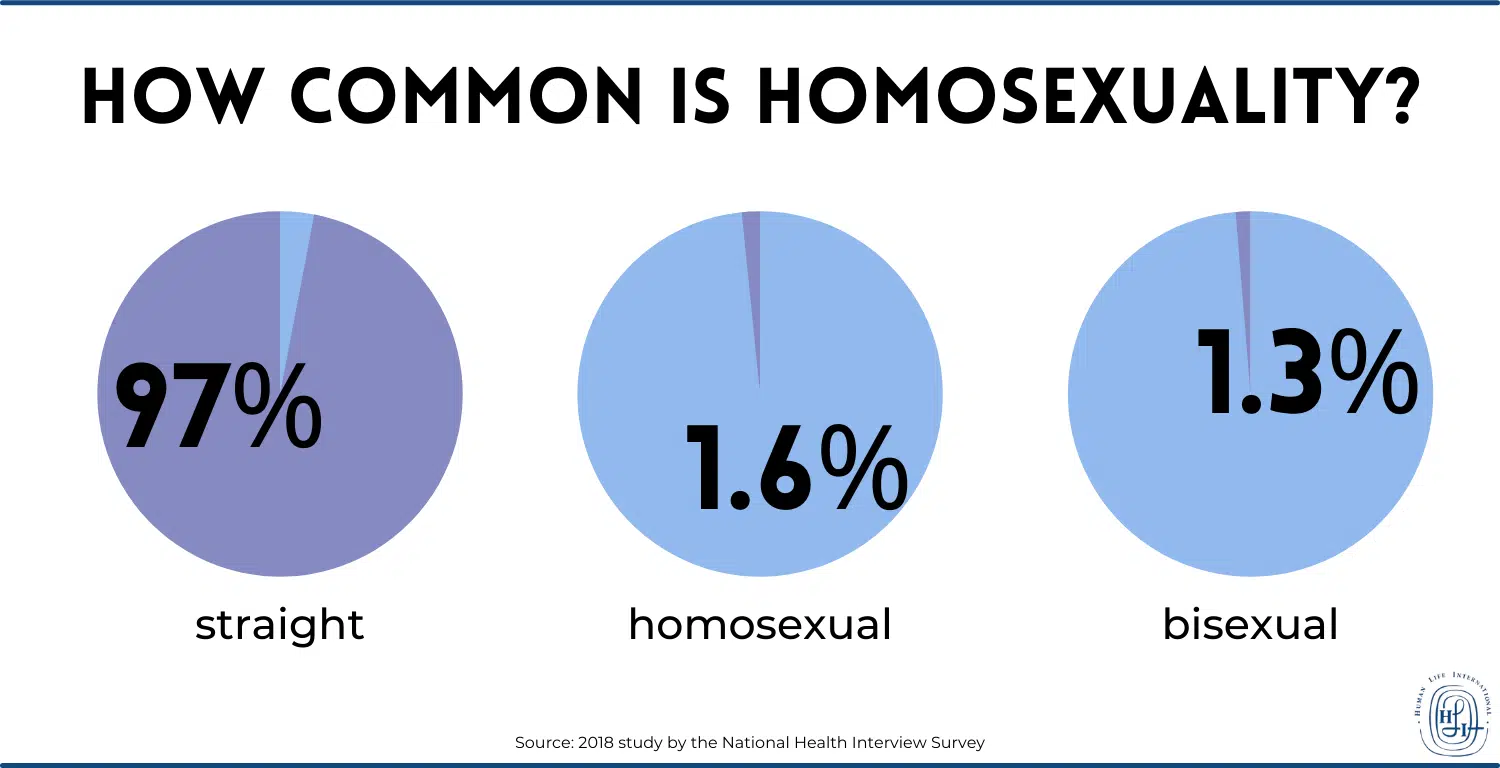
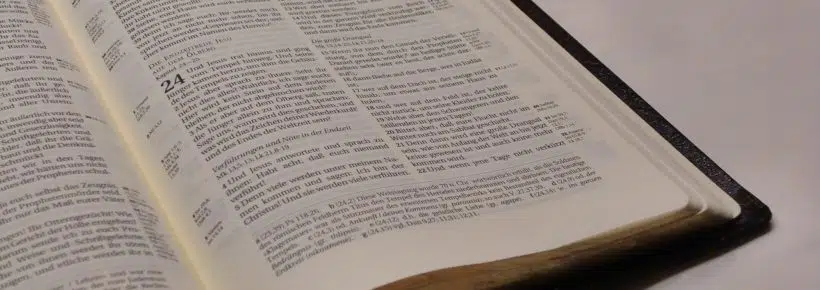
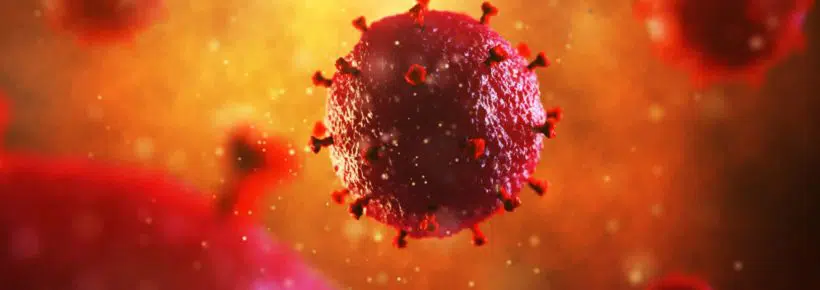
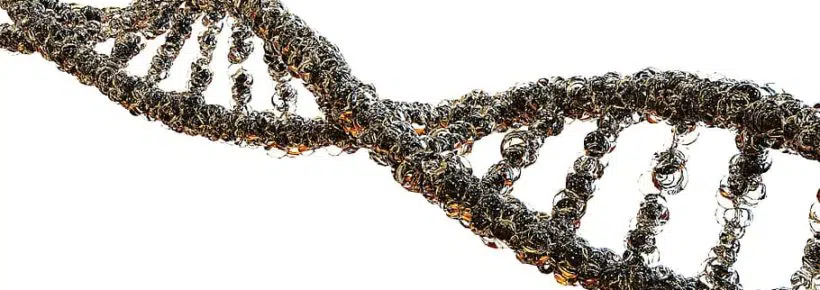


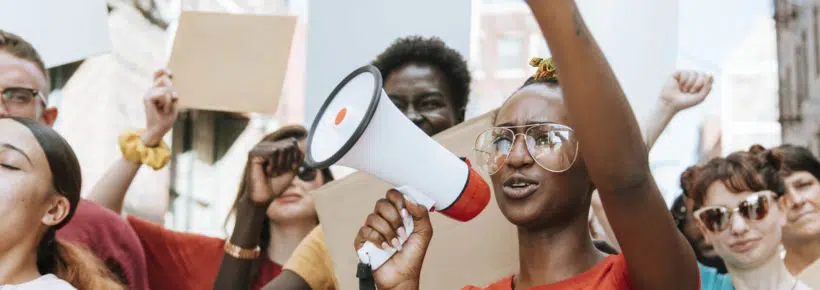
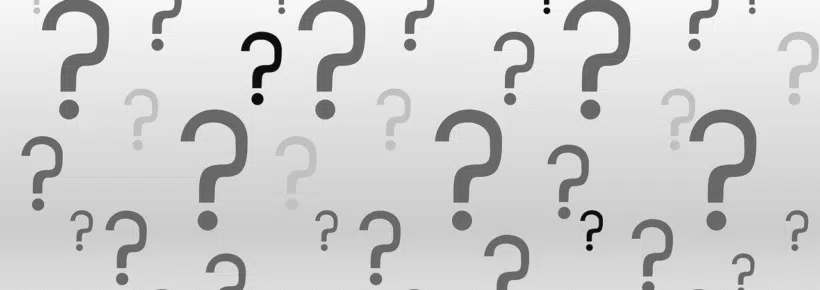


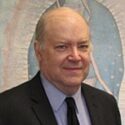
One more comment. 10% of Boston priests were either charged with or suspended for sexual abuse of minors over several decades…1958 to 2000. My priest cousin estimates 40-50% of Catholic priests are gay or bisexual. 1.3% is a rediculously low number using the same erroneous stats you accuse the 10% estimators of using. Ask the multi indicted ex Cardinal Mccarrick his estimates. His Wisconsin case was just dropped due to alleged dementia. His Mass. indictment is pending.
Your priest cousin’s estimate is entirely worthless in comparison to a real study or poll.
Your mere assertion “1.3% is a rediculously (sic) low number using the same erroneous stats you accuse the 10% estimators of using” is also worthless. A gratuitous assertion is gratuitously denied. Where’s the proof?
McCarrick’s estimates (even if available) would be as unverifiable and unscientific as your priest cousin’s, especially considering that McCarrick would have plenty of reasons to lie, and zero scruples in doing so.
Why are you wasting everyone’s time in this way?
Must be a MAGA group of evangelicals promoting 1.3%…absurd. 8% involved in all categories sounds accurate in my common experience. If sexual attraction and development is so complicated and influenced by so many factors, does it not seem off that 98.7% of people would get it RIGHT and be only heterosexual….nuts.
021
A February 2021 Gallup poll reported that 5.6% of US adults identify as lesbian, gay, bisexual, or transgender. 86.7% said that they were heterosexual or straight, and 7.6% refused to answer. More than half of all LGBT adults identify as bisexual (54.6%), while around a quarter (24.5%) identify as gay, 11.7% as lesbian, and 11.3% as transgender. Additionally, 3.3% of respondents chose another term to describe their orientation (e.g. queer). As a percentage of all US adults, 3.1% identify as bisexual, 1.4% as gay, 0.7% as lesbian, and 0.6% as transgender.[59]
According to a 2021 report from the Human Rights Campaign (HRC), “at least 20 million adults in the United States could be lesbian, gay, bisexual or transgender people.” and “Millions more could be another identity that is more expansive than these four terms.”[60][61] Others have estimated that there may be up to 30 million Americans who identify as lesbian, gay, bisexual, or transgender.[62]
In 2021, 8% of respondents to the United States Census Bureau’s Household Pulse Survey identified as LGBTQ, with an additional 2% of respondents having identified as neither gay, lesbian, bisexual, or straight. The Household Pulse Survey also indicated that more than 1% of adults in the United States could identify as transgender, with an additional 2% of respondents having identified as neither cisgender or transgender. This was the first time the U.S. Census Bureau asked about sexual identity and gender identity in a survey.[61]
A 2021 global pride survey by Ipsos, a multinational market research company, found that the percentage of those who identify as transgender, nonbinary, nonconforming, genderfluid, or as something other than male or female, was statistically significantly higher in the Generation Z (those born since 1997) population, at 4%, compared to the 1% of all other adults.[63] The statistic is estimated to be the same in the United States as it is globally.
2022
In February 2022 a Gallup poll reported that 7.1% of US adults identify as lesbian, gay, bisexual, or transgender. 34.6% of LGBT respondents were lesbian or gay, 56.8% were bisexual, 10.0% were transgender, and 4.3% identified as something else. LGBT identity was significantly higher among younger generations (20.8% of Generation Z and 10.5% of Millennials) than older generations (4.2% of Generation X, 2.6% of Baby Boomers, and 0.8% of those born before 1946).[64]
Footnot
My child is gay and has left the church, and I love him with all my heart. I wish you would do an article on how Catholic parents can cope with a child’s homosexuality. We need compassion. And we need support. Not condemnation. I feel like I hurt him by not having open conversations with him when he was younger. I didn’t know he was gay. Now he has anxiety and self-esteem issues and I feel like it’s my fault.
Sad Mama, of course you love your son dearly and are distressed by circumstances. This author encourages you to keep loving your son while disliking any sinful behavior, and to know as parents, we are not always responsible for the choices our children make. Remember, too, that having feelings of same sex attraction is not sinful; it’s the acting on those feelings that is sinful. Pray for your son, and we will as well. You make a good suggestion for another article, and I’ve passed your idea on to our education team. Thank you!
Sad Mama, Another resource I can recommend is the group EnCourage. EnCourage is a ministry within Courage International dedicated to the spiritual needs of parents, siblings, children, and other relatives and friends of persons who have same-sex attractions. Here’s a link to their website: https://couragerc.org/encourage/. Thank you so much for raising the question!
Thank you Dr. Clowes
Very good. It seems clear why Kinsey would want to hide his files. Perhaps he would have been among the statistics he was writing about in prison.
I know a young man who was sexually being abused and the Kinsey minded counselor who claimed to be a catholic recommended him that it was ok to engage in homosexual behavior and that while it was “normal” for young males to have homosexual feelings most grew out of it. His intended partner in this sanctioned therapy was gravely traumatized for decades until set free by the grace of confession even though the act never transpired. The abused boy became an alcoholic and died before he was 50 years old of alcohol related illness.
I recall that an article in the latter 1970’s studied homosexuality and the Catholic priesthood. This was given to me in the late 1980’s by a man who counseled gay men out of the behaviors he once engaged in while at the same time married to his wife in San Francisco and said it was one of the best done studies he had read at that time. I recall that 95% of that rather large sample were “straight” and 5% were “gay”. Of the heterosexual priests, 5% were unfaithful to their vow of celibacy. Oddly, of the portion of gay priests, 50% were unfaithful to their vow of celibacy.
Thank you, Dr. Clowes!
What a refreshing breath of fresh air, We are being bombarded with fake news, fake history and fake information. It is worth reading Gabriele Kuby, THE GLOBAL SEXUAL REVOLUTION’